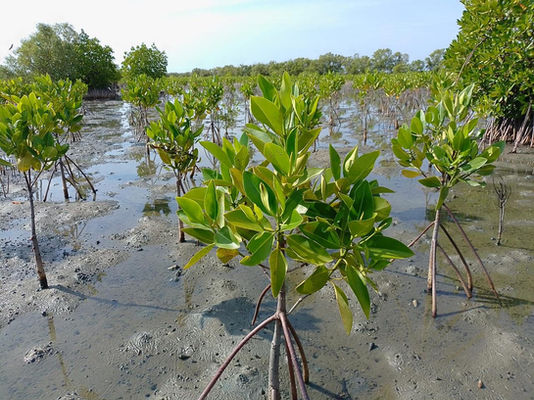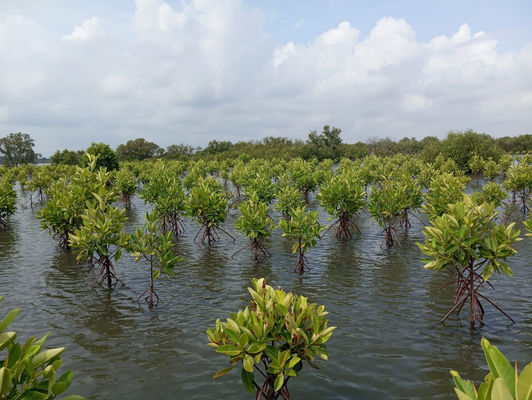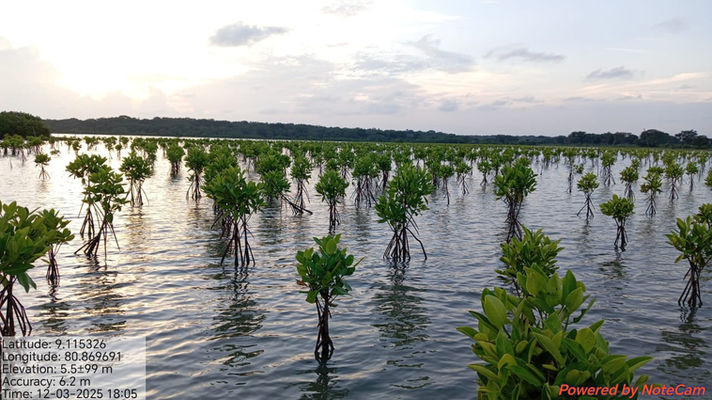Mangrove Restoration and Conservation
Mangrove forests are crucial for maintaining healthy coastline, by supporting biodiversity, preventing erosion, and absorbing large quantities of carbon dioxide from the atmosphere. In Sri Lanka, these forests are declining due to urban development and the over-exploitation of natural resources. Preservation of the mangroves is critical to providing local communities with sustainable goods and services. In response to the decline of the mangroves, the TCP launched a mangrove rehabilitation program.

RESTORATION OF MANGROVES RAKAWA
TCP initiated a mangrove restoration program in Rekawa Lagoon in 1999, planting native mangrove species. Regular monitoring revealed high plant mortality due to the area's semi-arid climate and limited rainfall. In response, additional mangroves were planted in November 2002, with ongoing monitoring to ensure success.
RESTORATION OF MANGROVES IN PUTTLAM LAGOON
In 2001, the TCP introduced about 150,000 native mangroves to Puttalam Lagoon to expand tropical mangrove forests, boost biodiversity, and provide sustainable forest goods and services to local communities. The project emphasizes long-term conservation and ecosystem management.











